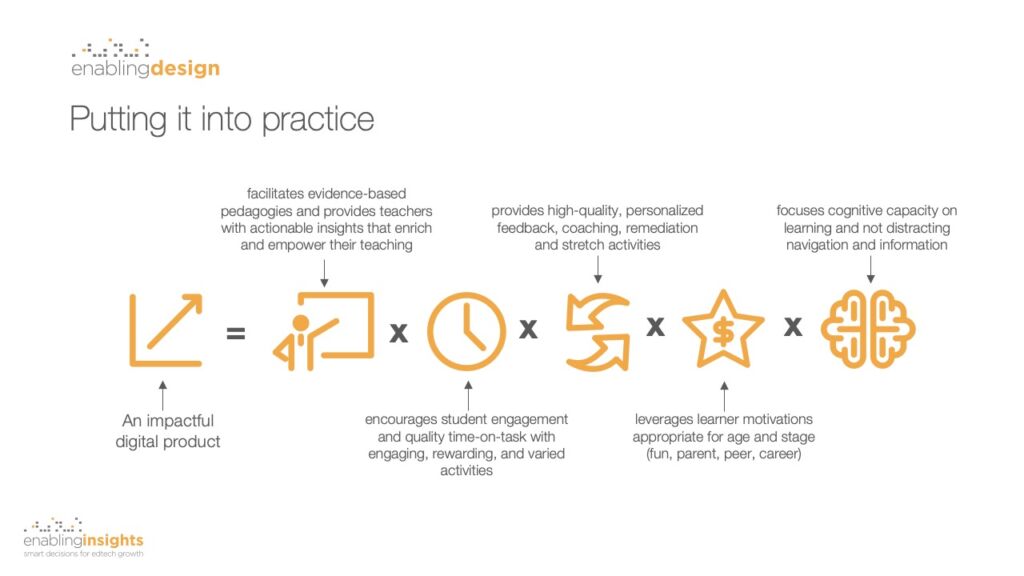A learning equation for edtech design, and how to use it

What’s the goal of this schematic and what’s it based on?
How to design impactful edtech is something I’m often asked by startups and even big education companies. Many of the answers lie in “learning engineering” (a term coined by guru Professor Chris Dede)—overtly designing your edtech for impact (and delivering customer value) by applying “what works” from learning science.
To help teams get started, I developed a simple framework that I naïvely call “a learning equation for edtech design”. I’ve presented this at conferences and polished it through dozens of workshops with Product teams over 10 years.
Educational Research is wide and deep. Synthesizing it into simple, practical guidelines requires hard graft and tough choices. (Steve Jobs once said, “you have to work hard to [make things] simple.”) As a result, some learning scientists may find my approach offensively simplistic!
You may be asking yourself, what is this lego-block, “learning equation” thingy actually founded on? Well, I took the top empirical drivers of learning from John Hattie’s epic meta-analysis of educational research and Richard Mayer’s uber practical principles of multimedia learning and distilled them into a simple schematic of what I have found to be the most essential elements of impactful products.
How would I use the learning equation?
You may now be thinking, neat, but how would I actually use it? Here’s how I do. I lay down a challenge to Product and UX teams: use the learning equation to structure your creativity during development to explicitly tackle each of the following questions.
How are you designing your educational product to:
- facilitate evidence-based pedagogies and provide data-driven insights?
- encourage student engagement?
- provide high-quality, personalized feedback?
- leverage learner motivations?
- focus cognitive capacity?
In practice, I’ve found the learning equation gets Product teams curious about “what works” from learning science. Second, it gets them thinking about how to overtly design to help effective teaching and learning. And third, if they tackle all of these well in the product, it powers compound (if not really multiplicative!) benefits to teachers and learners.

A few caveats
Of course, this schematic omits a whole lot of complexity—about user-centered design, specific pedagogies, learning from data, and how impact varies by use case and context, and instructor training.
However, it’s a tool that I’ve found to be powerful and practical for training Product and UX teams. And, it’s helped me to develop impactful edtech products throughout my career that have been adopted at scale.
I hope “the learning equation” is useful for you too! I will post some design examples in a few weeks.
P.S. A big thank you to everyone who’s given me feedback to refine this model over the years, with special thanks to Dr. Jeff Bergin and Claire Masson for their critiques.
